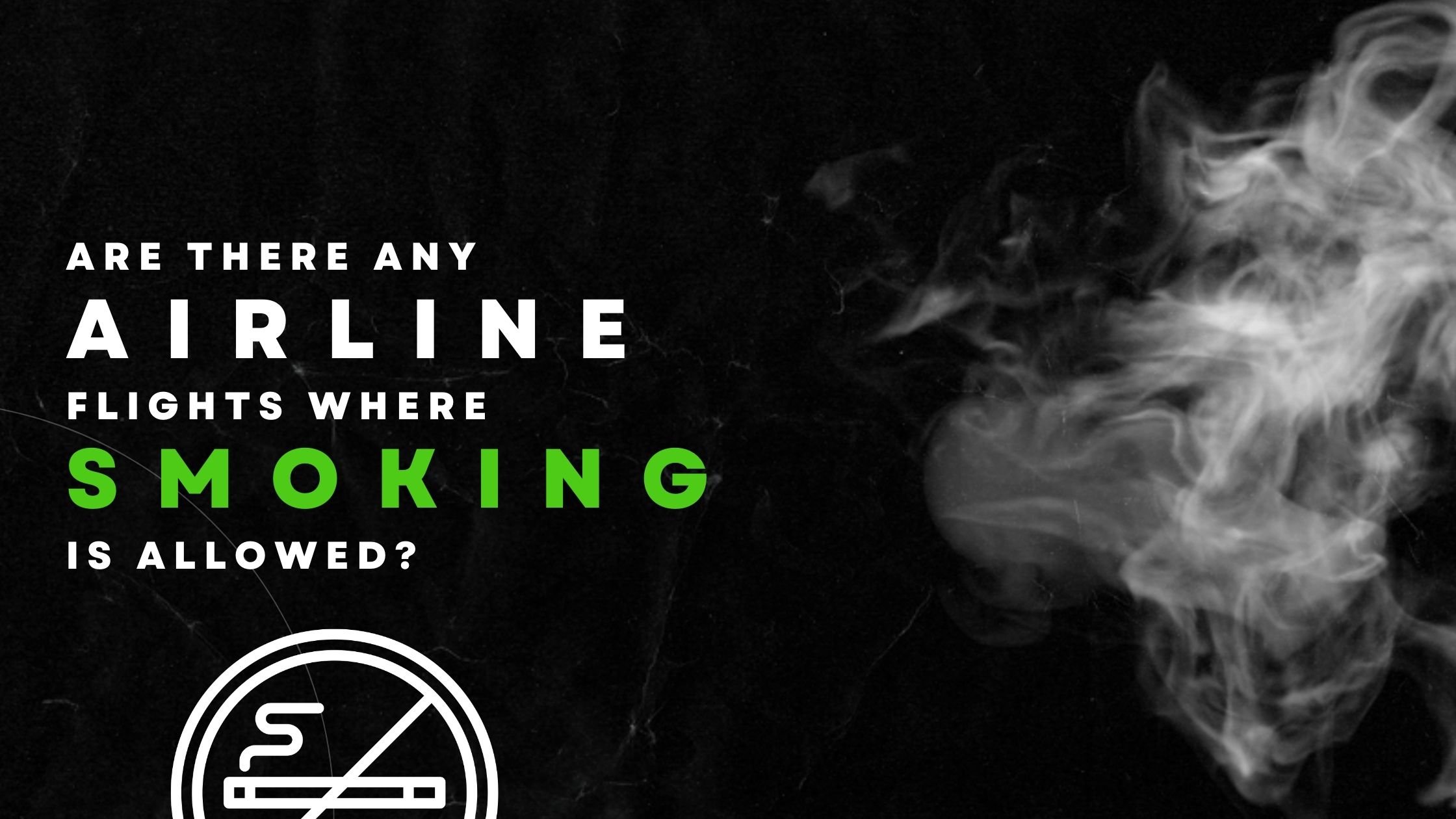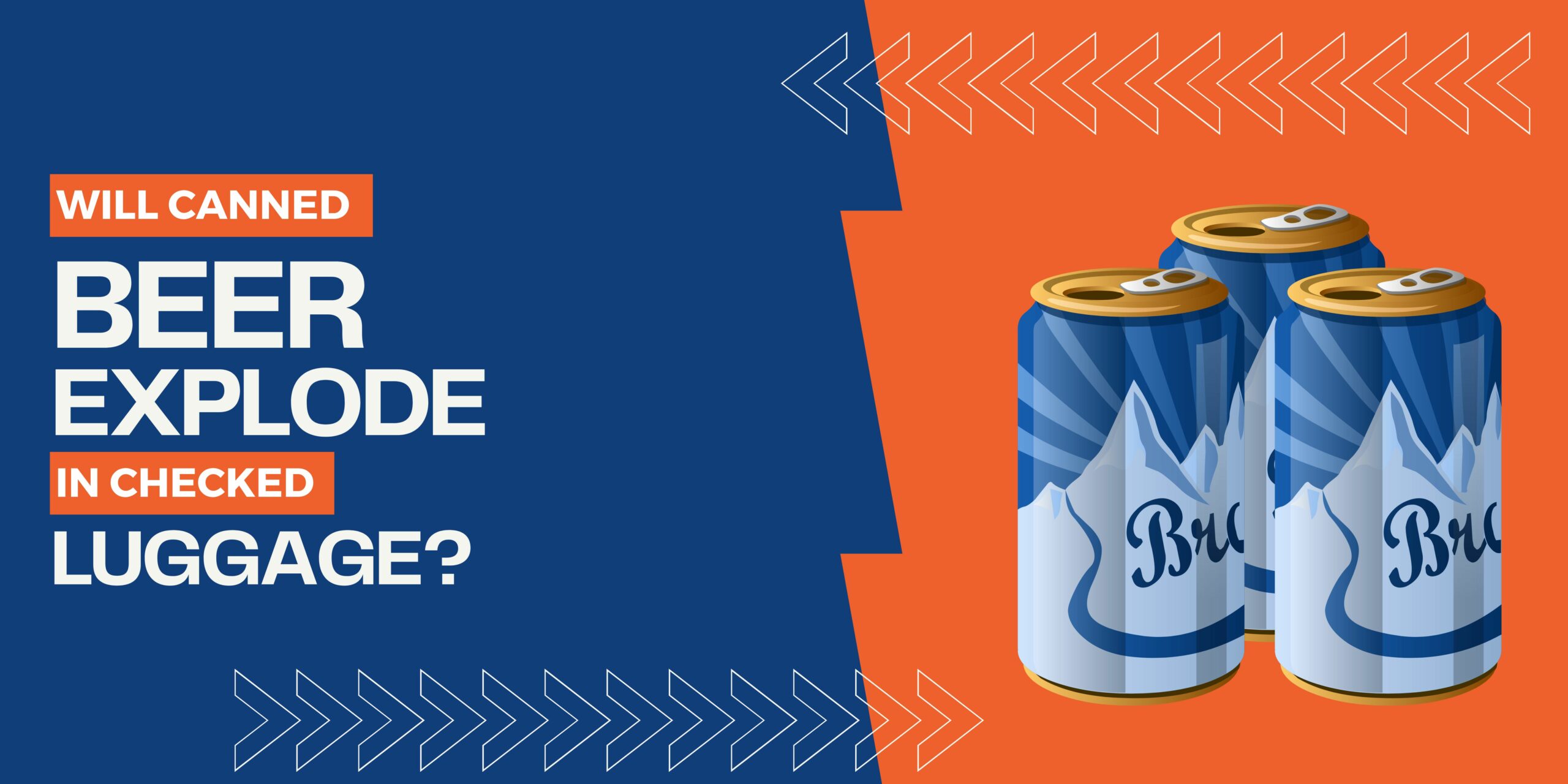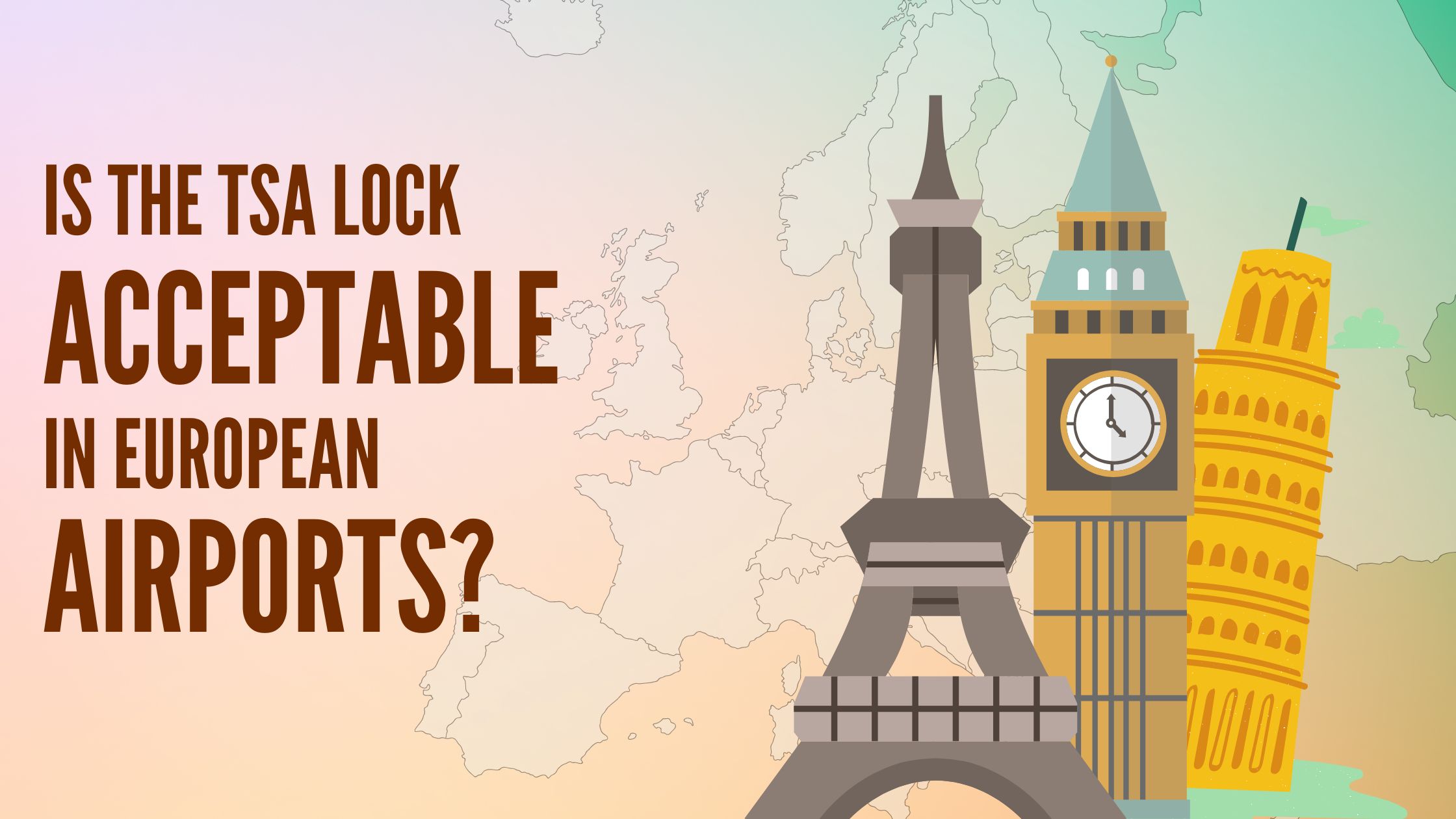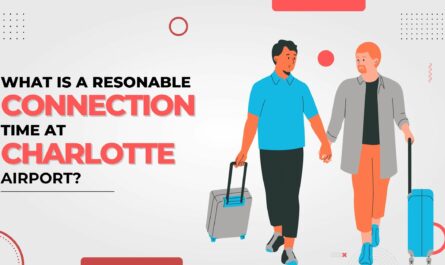Are you someone who loves to have a cigarette or cigar while traveling? If you are, then you might be wondering if there are any airline flights where smoking is allowed.
In this post, we’ll explore why this rule exists and if any airline still allows smoking on the plane.
We shall also explore possible alternatives for smokers who still want to enjoy their habit during a flight.
Keep reading to find out more!
Are There Any Airline Flights Where Smoking Is Allowed?
The short answer to this question is no. Smoking is banned from all commercial airline flights for a variety of reasons, including passenger health concerns, reduced maintenance costs associated with keeping the aircraft clean from tobacco smoke residue, and fire hazard prevention.
As of this writing, almost all international and domestic airline carriers have prohibited any form of tobacco product use (including cigarettes, cigars, pipes, etc.) anywhere onboard their planes.
These passengers didn’t want to be exposed to secondhand smoke during their flight.
Today, all major U.S. airlines have completely non-smoking cabins.
Any passenger found violating these rules can face serious penalties, including fines or even removal from the flight.
There are also some countries that have very strict laws about smoking during international flights, so it’s important to check those regulations before traveling abroad.
Additionally, some airports may have designated smoking areas for travelers waiting for their flights.
Note: Although it is rare, a few international airline companies such as Cubana, Iran Air, and Air Algeria still allow smoking in restricted sections on some of their flights.
Can You Smoke An e-Cig On A Plane?

If you’re a smoker and flying to your destination, it is important to know whether or not you can smoke an e-cigarette on the plane. Unfortunately, the answer is generally no. Most airlines have banned smoking e-cigarettes or vaping devices onboard flights due to safety concerns.
The Federal Aviation Administration (FAA) has also prohibited passengers from using electronic cigarettes aboard aircraft circulating in the United States.
The same rule applies to any other kind of battery-operated device that produces an aerosol or vapor, as stated in their Smoking Policy Laws section. As such, if you are caught with an electronic cigarette, you risk being fined or even arrested.
In addition, most airports have designated areas outside the airport that are available for smokers or vapers who need a place to smoke prior to or after their flight.
However, it is important to note that these areas are subject to local or state laws and regulations, so passengers should always check with their airline for more information.
It is also important to understand that although smoking e-Cigs or vaping pens on an airplane is not allowed, you may be able to bring your e-cigarette device onboard with you in checked luggage or a carry-on bag.
This is only after receiving permission from the airline.
It is best to contact your airline prior to traveling if you plan on bringing any type of electronic smoking device or related products onboard with you.
Can You Smoke Vape On A Plane?
The short answer is no, vaping on an airplane is not allowed. According to the U.S. Department of Transportation, smoking, including the use of electronic cigarettes (vaping), is prohibited in all aircraft cabins and lavatories. This rule applies to all flights under U.S. jurisdiction.
Most airlines also have their own policies when it comes to vaping on planes and many forbid passengers from using e-cigarettes as part of their general smoking policies for the safety and comfort of other passengers and crew members.
Do Private Jets Allow Smoking Onboard On Planes?
The short answer is yes, in some cases. Whether or not you can smoke on a specific aircraft depends on the individual owner’s preferences and policies. Many private aircraft owners are just as particular with their planes as they are with their homes and automotive vehicles.
Thus, it’s important to check beforehand regarding any special requirements for smoking onboard.
Most private jets do allow passengers to smoke during flights if the pilot and crew permit it. However, there may be restrictions in place because of safety concerns or other factors.
It is best to contact the charter company directly before your flight takes off to confirm whether smoking will be allowed onboard your private jet.
If smoking is allowed, you should also familiarize yourself with the rules about where you can smoke in the private jet.
When Was Smoking Banned On The Flights In The U.S.?

Photo from Unsplash
In the U.S., smoking has been prohibited in all commercial aircraft since 1990. This law stated that “no person may smoke in any area of an aircraft which is within a prescribed distance from any part or passenger seat on the airplane.”
Ralph Nader called for a smoking ban on airlines in the United States as early as 1969. The Association of Flight Attendants put additional pressure to implement such a ban, and United Airlines was the first airline to respond by creating a non-smoking section in 1971.
In July 1977, Aurigny Air Services became the first airline to entirely ban smoking on its flights. In 1994, Delta followed suit and banned smoking from all its worldwide flights.
This set off an avalanche of similar bans being implemented by other U.S.-based airlines over the following few years until eventually, all major U.S.-based airlines completely banned smoking on their flights in 1997.
The US government also helped push this movement.
In the United States, both tobacco companies and airlines fought against regulations regarding smoking on airplanes.
In 1976, the US Civil Aeronautics Board (CAB) issued a ban on cigar and pipe smoking, but due to pressure from tobacco interests, it was limited two years later in 1978.
That same year, CAB once again banned and then unbanned smoking in 1984, with chairman Dan McKinnon citing “philosophical” reasons for doing so.
The debate over the health concerns of smoking on aircraft continued for several more years until Congressional action in 1987 led to the official banning of inflight smoking in all commercial aircrafts throughout the U.S.
This would be followed by international bans in other countries around the world as well.
So, while the debate over smoking on airplanes began in 1976 with the limited US Civil Aeronautics Board ban and subsequent lobbying by tobacco companies, it wasn’t until 1987 that inflight smoking was officially banned in the U.S., setting a precedent for other countries to follow suit.
This ban has remained in force ever since, leading to safer and healthier flights for everyone.
Now let us have a look at a few other countries which banned smoking on airplanes following the U.S.’s suit:
Canada
In Canada, a national ban on smoking on commercial flights operated by Canadian carriers was implemented in 1994. This ban covered all domestic and international flights less than six hours long. The Japan route had previously not been included under this blanket ban.
However, due to lobbying from Air Canada and public health concerns about second-hand smoke exposure for passengers, a total smoking ban was eventually adopted.
As such, Air Canada adopted a nonsmoking policy on all its routes in 1990, and it was the first country to implement a total smoking ban on all flights operated by Canadian carriers in 1994.
The full ban went into effect despite opposition from Canadian Airlines, who argued that it would put them at a competitive disadvantage and cost them millions of dollars. However, this did not prevent the eventual adoption of the total ban.
Today, smoking is illegal on all commercial flights operated by Canadian carriers both domestically and internationally.
Passengers may be subject to fines or even jail time if they are found to be breaking the law.
Furthermore, foreign airlines flying into Canada must also adhere to these regulations while they are operating within Canada’s airspace.
Japan
In Japan, the first step to ban smoking in airplanes was taken in April 1988 when Japan Airlines (JAL) introduced a smoking ban on domestic flights of less than one hour. This ban was extended two years later in October 1990, to cover all domestic flights of less than two hours.
In 1998, All Nippon Airways and JAL banned smoking on all domestic flights. These airlines also included international flights in their ban as late as March 1999, making them among the last airlines to do so and bringing an end to smoking on more than 50% of Japanese domestic travel.
Europe
The banning of smoking in airplanes in Europe began as early as 1986 with Turkish Airlines, which banned inflight smoking for all domestic flights and international flights of less than six hours.
In 1988, SAS made its domestic flights in Sweden and Norway non-smoking, and this policy was expanded to other countries over the next few years. By 1996, SAS had banned smoking on all flights to Benelux countries, France, Germany Switzerland, Austria, and the UK.
In 1997 the European Union (EU) followed suit and announced a ban on smoking across all EU member states including on aircrafts. This ban extended to charter airlines flying within EU airspace, trains operated by state railway companies, public areas of bus terminals or airports, and any enclosed public workplace. The ban also applied to all international flights that took off from or landed in airports within EU member states.
These bans have made air travel much healthier and more pleasant for passengers traveling across Europe.
Many other countries outside of the EU also implemented similar restrictions or complete smoking bans on their domestic airlines.
In conclusion, the banning of smoking on airplanes in Europe began over three decades ago and has since been extended to cover most countries across the continent, making air travel safer and healthier for all passengers.
China
In 2017, China became the first Asian country to ban smoking on all commercial flights. This was after years of calls from health organizations and civil aviation authorities for stricter regulations on airplane smoking.
The decision came about after an advisory board set up by the Civil Aviation Administration of China (CAAC) in 2017 concluded that a ban would be beneficial for public safety and passenger comfort.
Additionally, the CAAC found that allowing passengers to smoke while in-flight increased maintenance costs due to air quality problems as well as fire risks posed by carelessly discarded cigarettes.
As part of the implementation of the new policy, airlines were required to provide designated smoking areas outside airports that could only be used before or after a flight.
Cuba
In 2014, the state-owned airline Cubana prohibited smoking on their international flights in Cuba. This ban was implemented to help ensure the safety and comfort of all passengers aboard their aircraft.
By banning smoking on all flights within its borders, Cuban airlines have been able to create a healthier and more comfortable flying experience.
If Smoking Is Prohibited On-Board, Why Do Airplanes Still Have Smoking Signals?

Photo by Possessed Photography on Unsplash
The smoking signal is a reminder that, despite the fact that smoking is prohibited on airplanes, it used to be permitted. Many of the aircraft currently in service are from the 1970s and 1980s when it was still allowed to smoke inside an airplane cabin. Therefore, instead of replacing all these signs when they update the interior design of their planes, airlines decided it would be more cost-effective to leave them as they are.
Furthermore, new airplane models also come with pre-installed smoking signals even though passengers are not allowed to light up during the flight. This serves as a reminder for everyone onboard that smoking is strictly prohibited inside the cabin.
Another reason why airplane manufacturers still install smoking signals is for safety reasons. In the event of an emergency, these signs can easily be spotted and alert passengers to evacuate quickly. The bright red background also helps people focus on the sign in case of turbulence or low visibility due to weather conditions.
Yet another reason why newer flight models still have in-flight smoking signs is to keep up with the tradition. This makes neither the newer models nor the older ones to not stick out solely for a missing sign.
In conclusion, although smoking is prohibited onboard all commercial aircrafts, they still come equipped with smoking signals as a reminder of times past and for safety reasons.
Airlines may remove these signs from their newer models but it seems unlikely that we will see them disappear from airplanes anytime soon!
If Smoking Is Prohibited On-Board, Why Do Planes Still Have Ashtrays?
The reason for this is actually quite simple: despite the ban, people don’t always adhere to the rules. The US Code Of Federal Regulation for Airworthiness states that regardless lavatories must have self-contained, removable ashtrays located at or near the entry side of each lavatory door.
In some cases, one ashtray may serve more than one door if it is visible from both areas.
Having these ashtrays shows airlines’ awareness and preparedness for passengers who disregard the rules and smoke on board.
Enforcement of the smoking ban is important, but having these ashtrays serves as a reminder for those tempted to break the rules – and may help deter some from doing so. For this reason, ashtrays are still required on aircraft today despite their lack of use.
The presence of ashtrays on commercial aircraft reminds us that it’s important to adhere to regulations in order to maintain a safe flight environment for all passengers – regardless of whether or not they choose to smoke.
So while you may never see an ashtray used during your next flight, remember that they are present as a safety measure and deterrent against breaking the law.
Let’s keep our flights safe by respecting these rules and laws!
How To Reduce Smoke Cravings During Flights?
To reduce cravings for smoking while you’re on a plane, try to keep your hands engaged in something such as a handheld game. You can also find distractions such as movies or music. Additionally, make sure to stock up on snacks.
Now, let us look at these methods and a few more in detail below:
Method 1: Keep Your Hands Busy
Smoking can give you a kind of urge to fiddle-a twitch when the need arises. To reduce smoke cravings during flights, keep your hands busy with an old-school Gameboy or by using other distractions like headphones, coloring books, handheld games, and more. Alternatively, you can even roll your own cigarettes if that helps!
Method 2: Stock Up on Snacks
It’s worth stocking up on snacks before flying as this will provide another distraction and help satisfy any cravings for nicotine. Eating some sweets is a great way to distract yourself from smoking and it also gives you a chance to take regular breaks during the flight which may help curb any cravings.
Method 3: Take Deep Breaths
If you’re really struggling, take a few moments to practice deep breathing. This will help you relax and can reduce any stress-related cravings for nicotine. Inhale deeply through the nose for five seconds and then exhale slowly through your mouth for five seconds. Repeat this several times until you start feeling more relaxed.
Method 4: Utilize Your Support System
Having a support system around you can be essential in reducing smoke cravings during flights. Talk to your family or friends about your struggles, they may have tips on how to best manage during flight emergencies such as smoking cravings. Remember, quitting smoking is not easy but it is possible!
Wrapping Up!
In conclusion, there are no commercial airline flights that allow smoking in the cabin or any other area of the plane. If you’re looking to take a smoke break during your travels, it’s best to check local laws at the airport and research private charter options if available.







